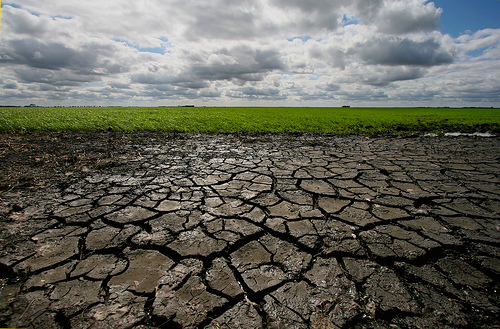
Reversing Climate Change through Regenerative Agriculture
We usually talk about sequestering carbon in plants, and we know how trees do it. When plants die, many of their parts break down and enter the soil as carbon. But what most people don’t realize is that the roots do it, too, and may do it in a more permanent way. It all has to do with the plant’s production of sugar, much of which leaks into the soil through the roots. What happens is when grasses grow they feed sugar to beneficial microbes that live around the rhizosphere, or root zone. In exchange the microbes supply other nutrients, minerals in particular, to the plant. This is how carbon enters the microbial ecosystem and goes through the food chain.
November 24, 2014 | Source: Audubon | by Rene Ebersole
Q: Should we be looking more closely at how the food we eat affects the climate?
A: I think there’s a growing recognition that you can’t really address climate without looking at the food system. Yet exactly how you do that, what that means from a policy point of view, is a lot more complicated than regulating coal-fired power plants.
Agriculture is a large source of global warming emissions. Yet you propose that it can help reverse climate change?
We certainly need to mitigate the amount of carbon and methane and nitrous oxide that agriculture adds to the atmosphere, but we can do much more than mitigate, because we can use agriculture to sequester large amounts of carbon. In fact, a third of the carbon in the atmosphere today was originally in the soil. Not in the form of fossil fuels but in the form of soil carbon.
So you’re saying farming can recapture carbon in the soil?
The body of science telling us exactly how to do it is still fairly undeveloped. There’s lots of experimentation going on, but farmers can show you that a patch of soil over there used to be exposed rock, and now there’s six inches of soil. Much of that is carbon.
We usually talk about sequestering carbon in plants, and we know how trees do it. When plants die, many of their parts break down and enter the soil as carbon. But what most people don’t realize is that the roots do it, too, and may do it in a more permanent way. It all has to do with the plant’s production of sugar, much of which leaks into the soil through the roots. What happens is when grasses grow they feed sugar to beneficial microbes that live around the rhizosphere, or root zone. In exchange the microbes supply other nutrients, minerals in particular, to the plant. This is how carbon enters the microbial ecosystem and goes through the food chain. Depending on the kind of microbes you have, they can store carbon in a very stable form, where it remains in the soil for an extremely long time.
The other way carbon sequestration happens is when plants are grazed by ruminants. Plants shed, or kill off, a certain amount of root mass to match the mass they’ve lost to the ruminant. They’re trying to keep their roots and shoots in balance. The roots they shed are broken down by worms, nematodes, microbes, and fungi and turned into soil organic matter. That’s how organic matter originally was formed.
We began losing this bank of soil carbon 10,000 years ago, when we started agriculture. And even more dramatically after we started using a plow. Because as soon as you break the skin of perennials that cover the soil, you stimulate microbial activity that releases a lot of carbon into the air. So the challenge is whether we can reverse that. The evidence is pretty good that, at least to some extent, we can.
